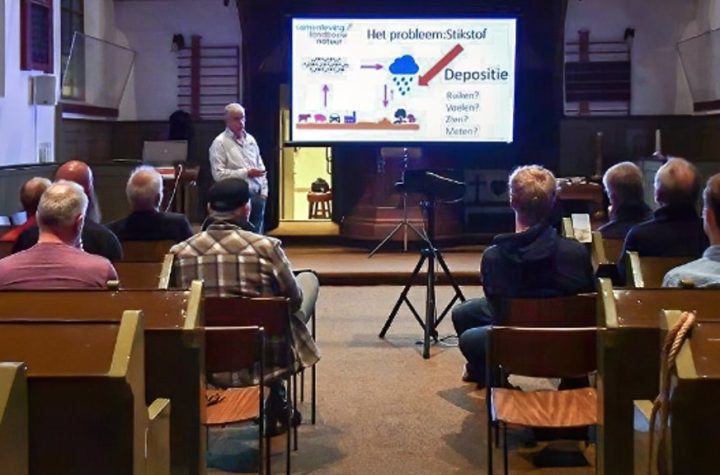“The charities sector gains credibility when charities dare to say they have already received enough money for a particular problem,” Stijn Bruers of Effective Altruism Belgium wrote after revealing Poverello’s money flows. This incident damages the sector’s image. Hence the importance of emphasizing again: most charities are good.
It seems to be an annual tradition: misbehavior shown to charities. This time it’s Poverello’s turn, one of the largest homeless organizations. According to reporters from Knack, Le Vif and RTBF, Poverello is sitting on a mountain of money over €10 million. Poverlo appears to have returned to the hypocrisy we witnessed centuries ago in the Catholic Church: defending the poor, while amassing a lot of wealth for yourself. This Poverello incident is bad for the charities sector’s image. Hence the importance of emphasizing again: most charities are good.
Building wealth doesn’t always have to be a bad thing for a good reason. In economic crises there is more homelessness and donors give less money to homeless organizations. The homeless organization can then allocate the funds as a precaution to be more effective in the event of another economic crisis. The charity can also decide to save money and, in the meantime, research more effective projects and then be able to spend the extra money saved on those that have found more effective projects.
So what’s the problem with Poverello? lack of transparency. Organizations that build significant capital should communicate about this transparently, with a clear policy plan. It is then clear to donors where and when the saved money will be used. Poverello downplays the importance of such transparency.
But there is a more structural problem with charities: Some charities receive more money than they can effectively use. Other charities have been neglected further and still have plenty of room for additional funding. These neglected charities are better able to convert the extra Euro donated into an extra life that is being saved for example. It is important for charities to communicate clearly about the amount of funding available to them. A good example of this is the tsunami in Japan ten years ago. Because of the media attention, emergency relief organizations suddenly received a lot of donations for the affected coastal areas of Japan. It is thanks to organizations such as Doctors Without Borders that they have given their donors the message that they have already received enough funds for the victims in Japan. Additional donations can no longer be usefully spent. These aid organizations asked donors if they could use the money they received for reconstruction in Japan for other projects elsewhere in the world. The charities sector gains credibility when charities dare to say they have already received enough money for a particular problem.
He. She Effective altruism It is an international movement looking into the most effective charities. As a general rule, for example, the larger the problem, the more solvable the problem, and the more neglected, the more cost-effective the charity that addresses the problem. Some neglected charities focus on big problems that have viable solutions. These charities can easily realize ten or even a hundred times more than the same euro.
It is not always clear to the donor which charities are the most effective. Since a small minority of charities are more effective than the vast majority, knowing effectiveness is very important. The extent to which the problem is neglected plays a major role in this. A good example of this is the Effective Altruism Organization give okayEach year, it makes its top recommendations to the most effective charities. It so happened that a few years ago, one of those recommended charities, the Malaria Foundation, suddenly got a lot of money from wealthy philanthropists. Since this charity could not quickly expand its capacity, it could no longer quickly turn the extra Euro donated into a positive outcome. They reported this to GiveWell, which is why GiveWell has removed that charity from its top recommendations list for a while. In the meantime, that organization has been able to expand its activities to other poor countries, and has room for additional donations again, and they are back on the list of top recommendations. All this was only possible due to the high degree of transparency of those organizations. In the GiveWell example, we can suspect that thousands of additional children’s lives have already been saved thanks to this transparency.
Still looking for a good reason for year-end gift: on the website of Effective altruism Belgium You will find an overview of the most effective tax deduction charities.
Stijn Bruers is Research Assistant in Economics at KULeuven and President of the Association for Effective Altruism in Belgium
It seems to be an annual tradition: misbehavior shown to charities. This time it’s Poverello’s turn, one of the largest homeless organizations. According to reporters from Knack, Le Vif and RTBF, Poverello is sitting on a mountain of money over €10 million. Poverlo appears to have returned to the hypocrisy we witnessed centuries ago in the Catholic Church: defending the poor, while amassing a lot of wealth for yourself. This Poverello incident is bad for the charities sector’s image. Hence the importance of emphasizing again: most charities are good. Building wealth doesn’t always have to be a bad thing for a good reason. In economic crises there is more homelessness and donors give less money to homeless organizations. The homeless organization can then allocate the funds as a precaution to be more effective in the event of another economic crisis. The charity can also decide to save money and, in the meantime, research more effective projects and then be able to spend the extra money saved on those that have found more effective projects. So what’s the problem with Poverello? lack of transparency. Organizations that build significant capital should communicate about this transparently, with a clear policy plan. It is then clear to donors where and when the saved money will be used. Poverlo downplays such transparency, but there is a more structural problem with charities: Some charities receive more money than they can effectively use. Other charities have been neglected further and still have plenty of room for additional funding. These neglected charities are better able to convert the extra Euro donated into an extra life that is being saved for example. It is important for charities to communicate clearly about the amount of funding available to them. A good example of this is the tsunami in Japan ten years ago. Because of the media attention, emergency relief organizations suddenly received a lot of donations for the affected coastal areas of Japan. It is thanks to organizations such as Doctors Without Borders that they have given their donors the message that they have already received enough funds for the victims in Japan. Additional donations can no longer be usefully spent. These aid organizations asked donors if they could use the money they received for reconstruction in Japan for other projects elsewhere in the world. The charities sector gains credibility when charities dare say they have already received enough money for a particular problem. As a general rule, for example, the larger the problem, the more solvable the problem, and the more neglected, the more cost-effective the charity that addresses the problem. Some neglected charities focus on big problems that have viable solutions. These charities can easily realize ten or even a hundred times more than the same euro. It is not always clear to the donor which charities are the most effective. Since a small minority of charities are more effective than the vast majority, knowing effectiveness is very important. The extent to which the problem is neglected plays a major role in this. A good example of this is the effective altruism organization GiveWell, which every year gives its top recommendations to the most effective charities. It so happened that a few years ago, one of those recommended charities, the Malaria Foundation, suddenly got a lot of money from wealthy philanthropists. Since this charity could not quickly expand its capacity, it could no longer quickly turn the extra Euro donated into a positive outcome. They reported this to GiveWell, which is why GiveWell has removed that charity from its top recommendations list for a while. In the meantime, that organization has been able to expand its activities to other poor countries, and has room for additional donations again, and they are back on the list of top recommendations. All this was only possible due to the high degree of transparency of those organizations. In the GiveWell example, we can suspect that thousands of additional children’s lives have already been saved thanks to this transparency. Still looking for a good reason for an end-of-year gift: On the Effective Altruism Belgium website you’ll find an overview of the most effective tax-deductible charities. Stijn Bruers is Scientific Assistant in Economics at KULeuven and Chairman of the Board of Effective Altruism Belgium

“Coffee buff. Twitter fanatic. Tv practitioner. Social media advocate. Pop culture ninja.”











More Stories
Introduction / PB Skarsterbrêge: Our countryside is in danger due to unnecessary nitrogen plans
Personal Care Association – Arts en Auto
“I wish I had never bought guinea pigs for my daughter.”